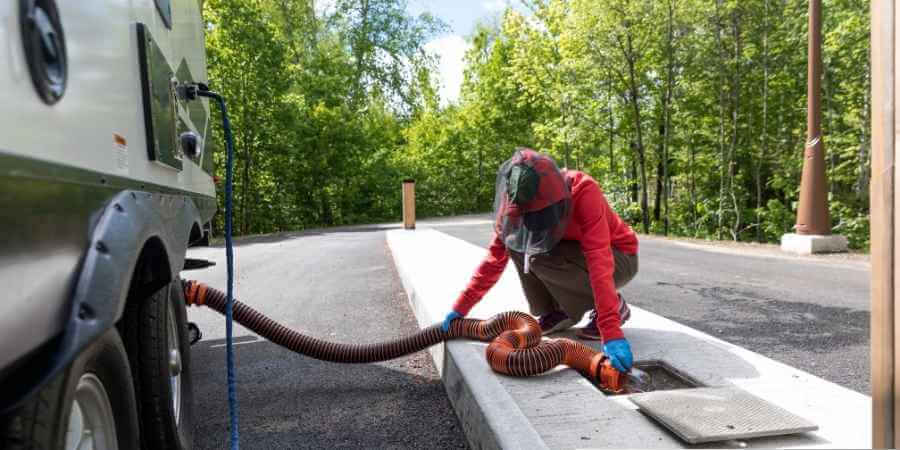Sewer line damage can be a homeowner’s worst nightmare, leading to costly repairs, foul odors, and potential health hazards. A damaged sewer line can cause sewage backups, slow drains, and even structural damage to your property if left unaddressed. Many factors contribute to sewer line deterioration, ranging from natural causes to human activity. Understanding the root causes of sewer line issues can help you take proactive measures to prevent expensive and inconvenient repairs. Whether you’re dealing with minor clogs or major breaks, addressing problems early on can save you from more extensive sewer line repair.
1. Tree Root Infiltration
Tree roots are a leading cause of sewer line damage. As trees and shrubs grow, their roots naturally seek out moisture sources, and sewer pipes provide an ideal environment. Small cracks, loose joints, or weak spots in pipes allow roots to penetrate, gradually expanding inside the pipes. Over time, this leads to blockages, pipe fractures, and even complete collapse in severe cases.
How to Prevent It:
- Be mindful of where you plant trees and large shrubs. Avoid planting them near sewer lines.
- If you already have trees near your sewer line, consider regular professional inspections using a sewer camera to check for root intrusion.
- Use a root-killing chemical, such as copper sulfate, or hire a professional to remove invasive roots before they cause severe damage.
- If root infiltration has already caused significant damage, replacing old pipes with PVC or trenchless pipe lining can help prevent future issues.
2. Aging and Corroded Pipes
Older homes, especially those built before the 1980s, often have sewer pipes made from materials that degrade over time, such as clay, cast iron, or Orangeburg (a fiber conduit). These materials are susceptible to corrosion, rust, and gradual wear, making them more prone to cracks, leaks, and collapses.
How to Prevent It:
- If your home has old sewer pipes, consider having a professional conduct an inspection to assess their condition.
- Upgrading old pipes to modern materials like PVC or HDPE can increase durability and longevity.
- If full replacement isn’t feasible, trenchless repair methods, such as pipe lining or pipe bursting, can reinforce aging sewer lines without extensive excavation.
3. Clogs and Blockages
A clogged sewer line is not only an inconvenience but also a significant contributor to pipe damage. Over time, debris like grease, food waste, hair, wipes, hygiene products, and excessive toilet paper can accumulate in the pipes, leading to blockages. These blockages create pressure buildup, which can cause leaks, cracks, or even burst pipes.
How to Prevent It:
- Be mindful of what you flush down the toilet. Only human waste and toilet paper should be flushed.
- Avoid pouring grease, oil, or fat down the drain, as they solidify over time and cause stubborn clogs.
- Use drain strainers to catch debris like hair and food particles.
- Schedule routine drain cleaning or hydro jetting services to keep your pipes clear of buildup.
4. Ground Shifting and Soil Conditions
Even if your sewer line is properly installed, external environmental factors can still cause damage. Shifting soil, ground movement, earthquakes, and extreme weather changes can all impact the stability of underground sewer pipes. When soil shifts, it can put excessive pressure on pipes, leading to misalignment, cracks, or complete collapses. In colder climates, freezing and thawing cycles can also weaken sewer lines over time.
How to Prevent It:
- If you live in an area prone to ground movement, consider reinforcing your sewer pipes with flexible materials that can withstand shifting soil.
- Regular sewer line inspections can help detect early signs of movement-related damage.
- If you notice frequent drain backups or sinkholes forming in your yard, consult a plumber immediately to assess potential pipe damage.
5. Poor Installation or Inferior Materials
Improper sewer line installation or the use of substandard materials can lead to early failures. If pipes are not properly aligned, sloped, or sealed during installation, they can become weak points susceptible to leaks, blockages, and breaks. Additionally, using cheap or incompatible materials increases the likelihood of premature degradation.
How to Prevent It:
- Always hire a licensed and experienced plumber for sewer line installation or replacement.
- Ensure that high-quality materials like PVC or HDPE are used to extend the lifespan of your sewer system.
- Regular maintenance and inspections can help identify problems early on before they require major repairs.
Signs of Sewer Line Damage
Knowing the warning signs of a damaged sewer line can help you take action before the issue worsens. Watch out for these common indicators:
- Slow-draining sinks, tubs, or showers
- Gurgling noises coming from drains
- Unpleasant sewer odors inside or outside your home
- Patches of lush, unusually green grass in your yard (could indicate a sewage leak)
- Sudden sinkholes or indentations in your lawn
- Frequent sewage backups or toilet overflows
If you notice any of these signs, it’s crucial to contact a professional plumber for an inspection and necessary repairs.
Final Thoughts
Sewer line damage can be a costly and disruptive issue, but with the right preventive measures, you can significantly reduce the risk. Regular inspections, responsible waste disposal, and upgrading old pipes are all effective ways to maintain a healthy sewer system. By staying proactive, you can avoid unexpected sewer problems and keep your home’s plumbing in top condition. If you suspect sewer line damage, it’s best to consult a professional before the problem escalates into a major sewer line repair. Additionally, using handyman apps can help you find reliable professionals for regular maintenance and emergency repairs, ensuring your sewer system stays in optimal condition.



